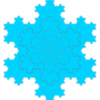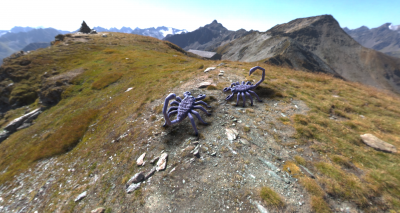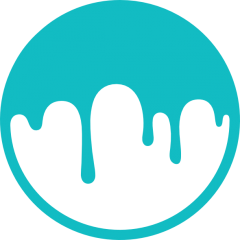Search the Community
Showing results for tags 'hdr'.
-
From the album: Mattys gallary
two mountain scorpions get ready to face off ------------------------------------------------------------------------------------- rendered by positioning models within the environmental sphere rendering once with alpha once without than overlaying the images and painting shadows between the layers© enviorment maps belong to respective owners (came with 3d coat) and the scorpions are not copyrighted they are opensource (curtisy of me)
-
- scorpion
- enviormental map
-
(and 6 more)
Tagged with:
-
Source Article The difficulty I encountered while reviewing these programs was not knowing what the skill level of the reader would be. Novices at photography and those that do not want to spend a lot of time on their computers will prefer a different program than someone who is highly skilled at computer usage and picky about their photography. In my review, I have attempted to illuminate the assets and liabilities of each program to help you decide what is best for you at your level. Fusion F 1 is the free version [predecessor?] to Fusion 2.6.3. You will need to look towards the center of the web page to find the link for the free version. Fusion would become my primary pick of the group. It yielded the best result on the handheld test and produced very good results on the other tests. I obtained better results using the SUM operator rather than the HDR operator. Fusion's interface is a little dated, but I found the controls clearly labeled and the preview responsive and accurate though small. When using the SUM operator, I did have problems with halos around areas of transition from light to dark. This is fixable by increasing the "smoothing" slider. The online documentation is minimal and the built-in help did not work - so you're kind of on your own here. Overall, I feel it gave good results with average work. Best for the photographer who wants to spend a little more time with the image. Luminance supports all major incoming file formats including RAW; but unfortunately only saves in JPG. Luminance HDR (Qtpfsgui) is an open source project from Source Forge. It would come in second my tests. It produced an acceptable result from the handheld test and good results from default settings. One advantage to Luminance is the thumbnails it creates using the different algorithms available. It makes it easy for a user to pick a thumbnail that they like and then make small adjustments. However the interface is cryptic and lacking description and documentation that I found was wanting. What does the "Beta" slider do? Most is trial and error and big "reset everything" button would be very helpful after chasing a rabbit down a dark hole. It would also be nice if the preview refreshed itself after making a slider change instead of having to remember to press the "tone map" button every time. And do note that after you have made all your choices, you should change the render size to as large as possible as it has been rendering low res all this time. I did have a little bit of an issue with the larger render not matching the low-res render. This would be solved by getting in the ballpark at low resolution, moving to medium resolution and tweaking more and then finally rendering at high resolution. Luminance did create good results with default settings as well as options to fine tune the image making a suitable choice for amateur and serious amateur photographers. Luminance supports any incoming camera file including RAW formats. Picturenaut is the easiest to use of the group. The interface is straight forwards and easy to use and yielded decent results using default settings. It would be a good choice for those who do not want to get into the bowels of a software when making an HDR image. Picturenaut had problems with the alignment of the handheld images, so do use a camera support (which you should anyway...) Picturenaut also does not offer as many different algorithms to chose from so tweaking for perfection is not always a potential. I had my best results with Adaptive Logarithmic. The documentation on the website was a nice resource for HDR in general. Picturenaut supports popular file formats including RAW. Because of the simplicity, it is the best choice for the novice photographer. FDRTools Basic is the scaled down version of FDRTools. It offers the greatest ability to fine tune and tweak the finished product. For those familiar with using histograms and curve tools, this will not be intimidating. Unique to FDR is the ability to control how much and what part of each image figured into the equation as opposed the the normal software that is only adjusting the output. This ability is not only just in the luminance, but in the saturation and contrast sections giving the devoted user quite the opportunity work ad infinitum on their image. The web site has a 80 page PDF file that details many of the deeper aspects of the program. The translation from German is occasionally rough. FDR had problems with the alignment of my handheld photographs. There is a way to manually tweak the alignment; but this was not sufficient for my trial set. The results from FDR using default settings were often far from acceptable and I would spend more time fussing with FDR than the other programs. The more changes I made, the slower the preview became. In spite of the myriad of controls, my results with FDR were muddy and lacking definition. My overall impression of FDRToolsBasic was that it had more potential than I was getting out of it. For the avid photographer/computer geek who really wants to get into the gritty detail, this program could be your ticket. FDR will import all popular formats including RAW. Last but not least, click here to see a real-world example of these programs' performance.




